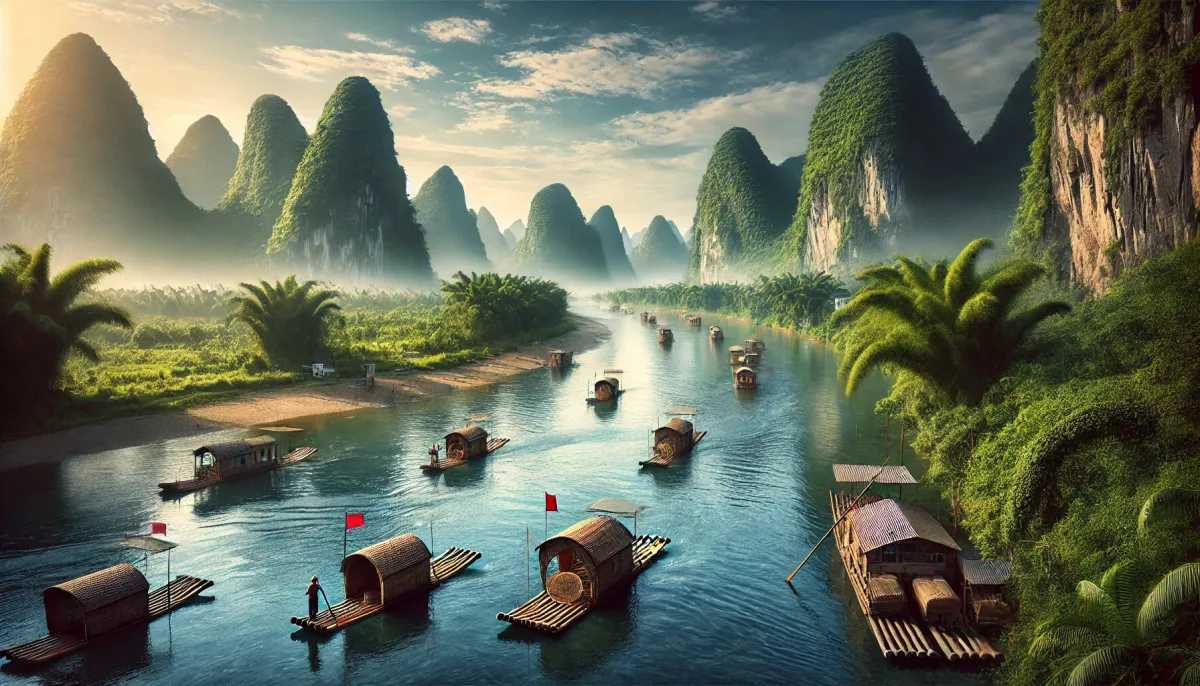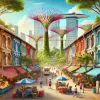Guilin, a name synonymous with stunning natural beauty, has always held a special place in my travel bucket list. Finally setting foot on this land, I was immediately captivated. The scenery unfolded like a traditional Chinese scroll painting, and the melodic folk songs echoed through the air. The city greeted me with the sweet fragrance of osmanthus blossoms, while the delicious aroma of Guilin rice noodles tantalized my taste buds. This journey through Guilin was a feast for the senses, an experience I'm eager to share with fellow travel enthusiasts, especially those seeking an authentic Asian adventure.
Guilin: More Than Just a Pretty Picture
Guilin, situated in northeastern Guangxi Zhuang Autonomous Region, offers more than just picturesque landscapes. Its rich history, dating back to the Qin Dynasty, adds another layer to its charm. The name itself, derived from the abundance of cassia trees, hints at the region's natural wealth. Nestled within the Guangxi uplands, amidst the Xianggui Corridor, and surrounded by the stunning karst topography, Guilin boasts a unique geographical setting. This unique landscape contributes to the city's reputation for having the "most beautiful scenery under heaven." For Americans seeking an unforgettable travel experience, Guilin offers a unique blend of natural beauty and cultural richness that is hard to find elsewhere.
Cruising the Li River: The Heart of Guilin
The Li River, the lifeblood of Guilin, winds its way through the city, showcasing countless breathtaking natural wonders along its 164-kilometer length. Considered one of the most beautiful rivers globally, a cruise down the Li River is an absolute must. The experience is mesmerizing, with towering peaks, lush vegetation, and traditional fishermen dotting the landscape. Each scene unfolds like a masterpiece, capturing the raw beauty of nature. This is an experience that will stay etched in your memory long after you've left.
Exploring the Caves: Nature's Underground Masterpieces
The karst landscape has also given rise to magnificent caves, each a testament to the power of nature's artistry. These caves, often referred to as "yan" by the locals, are adorned with stunning rock formations, illuminated by colorful lights, and accompanied by the gentle murmur of flowing water. The Reed Flute Cave, known as the "Palace of Natural Arts," has even hosted numerous international dignitaries, further solidifying its reputation as a must-see attraction. These caves offer a unique glimpse into the geological wonders hidden beneath the surface, adding another dimension to the Guilin experience.
Iconic Landmarks and Cultural Gems
Guilin's landscape is dotted with iconic landmarks, each with its own unique story to tell. Elephant Trunk Hill, the city's symbol, stands majestically at the confluence of the Li and Peach Blossom Rivers. The sight of the "water moon" through the arch of the hill is a truly magical experience. The Two Rivers and Four Lakes scenic area, a network of waterways encircling the city, offers another perspective on Guilin's beauty, especially at night when the illuminated bridges and pavilions reflect in the water.
| Landmark | Description |
|---|---|
| Elephant Trunk Hill | A natural rock formation resembling an elephant drinking from the river, a symbol of Guilin. |
| Two Rivers and Four Lakes | A network of waterways offering stunning views of the city, particularly at night. |
| Reed Flute Cave | A stunning cave adorned with colorful lighting, showcasing nature's artistry. |
| Longji Rice Terraces | Breathtaking terraced rice fields carved into the mountainsides, a testament to human ingenuity. |
| Solitary Beauty Peak (Duxiu Feng) | A prominent peak offering panoramic views of the city and surrounding landscape, also known as the "Pillar of the Southern Sky." |
Beyond the City Center: Discovering Hidden Gems
Venturing beyond Guilin's city center, you'll discover even more hidden gems. The Yulong River, a tributary of the Li River, offers a tranquil escape, where you can drift on bamboo rafts and soak in the serene beauty of the surrounding countryside. The Longji Rice Terraces, a UNESCO World Heritage Site, are a testament to human ingenuity, with cascading rice paddies carved into the mountainsides. These sites offer a glimpse into the rural life and agricultural traditions of the region.
Guilin's Rich History and Culture
Guilin's beauty extends beyond its natural wonders. The city's rich history and culture are evident in places like the Duxiu Feng and the Wangcheng Scenic Area. This historical site, home to the Solitary Beauty Peak, has been a place of significance since the Yuan Dynasty, and later served as the Prince's City during the Ming Dynasty. The East and West Alley historic district, located at the foot of Duxiu Feng, offers a glimpse into Guilin's past, with its preserved architecture and traditional shops. These historical and cultural sites add depth and context to the Guilin experience, making it a truly enriching journey.
A Blend of East and West: The Charm of Yangshuo
Yangshuo, a town just south of Guilin, adds another dimension to the journey. Its famous West Street, a vibrant mix of traditional Chinese architecture and Western influences, offers a unique cultural experience. Here, you can find everything from quaint tea houses to lively bars, reflecting the town's international appeal. Yangshuo is a perfect example of how tradition and modernity can coexist harmoniously, creating a vibrant and engaging atmosphere.







